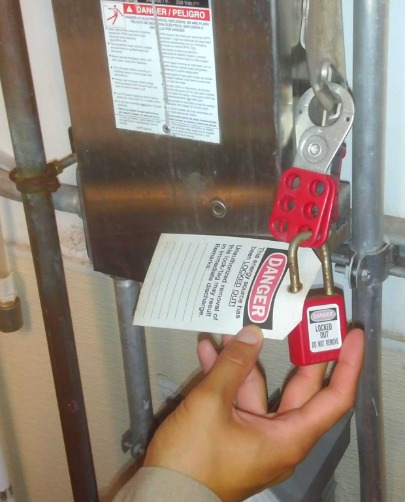Life Safety - LOCKOUT / TAGOUT
OSHA’s 5th Most Frequently Cited Standard
September 14, 2020

BY SAM SCHNEIDER
Every year millions of employees operate, service, and maintain machines and equipment. All employees deserve to be safe when doing so. Consequently, failing to establish a Written Lockout Tagout (LOTO) Program is one of the Occupational Safety and Health Administration’s (OSHA) routine top ten most cited standards.
OSHA frequently cites employers for multiple LOTO violations including failure to have written LOTO procedures specific to the machines and equipment employees must service and maintain, failure to keep these procedures up-to-date by inspecting them, and auditing the employees who use them, at least annually, and for not keeping records of these activities. So, in addition to placing employees at risk, the employer is typically subject to a hefty monetary penalty.
Today, OSHA is also citing employers for misuse of the §1910.147(a)(2)(ii) minor servicing exception sometimes referred to by employers as "Alternative Control Measures" (ACM). This exception only applies to minor tool changes, adjustments, and other minor servicing activities that take place during normal production operations, and only if these minor servicing activities are routine, repetitive, and integral to the use of the equipment for production and the ACM provide effective protection. Too often, however, this exception is inappropriately expanded into activities where full LOTO is required: machine or equipment set up, when removing or bypassing a guard to service the equipment or machine, and even when an employee has to place a body part into a point of operation to accomplish a task!
Historically, several cases have been litigated regarding the use of ACM in situations that are not defined under the minor servicing exemption. See Westvaco Corporation, 16 BNA OSHC 1374 (Docket No. 90-1341, 1993). The LOTO standard, and consequently this particular exception, has remained largely unchanged since its inception (1990). Since that time the American National Standard on the Control of Hazardous Energy - Lockout/Tagout And Alternative Methods (ANSI/ASSE Z244.1-2016) has recognized a broader universe of hazardous energy control with greater flexibility through the use of alternative methods based on risk assessment. Be careful following this industry standard without first considering the limitations of OSHA's LOTO standard! When LOTO was first drafted OSHA deliberately departed from several aspects of the ANSI standard in order to provide a higher level of employee protection. See 58 FR 16617 (March 30, 1993) OSHA's policy and Federal Law 29 USC §§654(a)(2) remains clear: Employers must comply with occupational health and safety standards as they are written.
So, protect your employees and your business: review your OSHA logs for potential LOTO-related injuries, evaluate your equipment specific LOTO procedures - write them if you haven’t done so, audit your authorized employees, and don’t allow ACM to be used as a shortcut. This is especially essential as employees return to work from a long time away from the workplace.
For LOTO assistance, contact Sam Schneider at SSchneider@gs-legal.com.